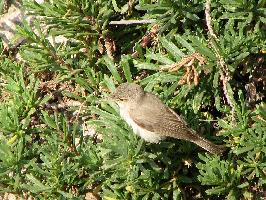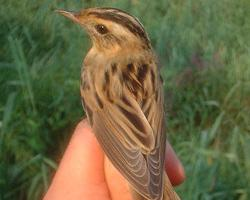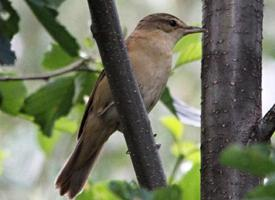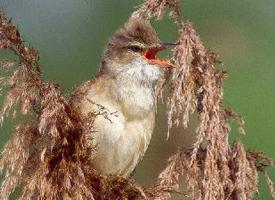
Descrierea animalului
The Eastern Olivaceous Warbler (Hippolais pallida) is a small, elusive bird species that belongs to the Acrocephalidae family, known for its diverse group of warblers. This species is widely distributed across the Eastern Mediterranean, extending through the Middle East to Central Asia. It is a migratory bird, spending the breeding season in its range's temperate zones and wintering in sub-Saharan Africa. Its migration patterns highlight its adaptability and resilience, navigating vast distances across varied terrains and climates.Physically, the Eastern Olivaceous Warbler presents a rather understated appearance, which is characteristic of many in the Hippolais genus. It typically measures about 13 to 15 cm in length, with a wingspan that ranges from 17 to 21 cm. The bird's plumage is predominantly a dull olive-grey, which seamlessly blends into the foliage of trees and bushes, providing it with excellent camouflage against predators. The underparts are paler, often with a yellowish tinge, while the legs are a subtle pinkish or flesh color. Its bill is fine and pointed, designed for gleaning insects from leaves and branches, which constitutes its primary diet. This includes a variety of small invertebrates such as spiders, beetles, and caterpillars. During the breeding season, it may also feed on fruits and berries.
One of the most distinguishing features of the Eastern Olivaceous Warbler is its song, a melodious and intricate sequence of trills and whistles that can often be heard during the early morning and late evening in its natural habitat. The bird's vocalizations play a crucial role in territorial displays and attracting a mate during the breeding season.
Breeding habits of the Eastern Olivaceous Warbler involve constructing a cup-shaped nest, usually well-hidden in dense shrubbery or low in a tree. The female lays between 3 to 5 eggs, which she incubates for about two weeks. The chicks are altricial, born featherless and blind, relying entirely on their parents for warmth, protection, and food. Both parents are involved in feeding the chicks until they are ready to fledge, about two weeks after hatching.
The habitat of the Eastern Olivaceous Warbler is typically characterized by open woodlands, olive groves, orchards, and scrublands. It prefers areas with a mix of trees and bushes, which provide ample feeding opportunities and nesting sites. Despite its preference for certain habitats, this warbler is quite adaptable and can be found in a range of environments from sea level to mountainous areas.
Conservation-wise, the Eastern Olivaceous Warbler is currently listed as Least Concern by the International Union for Conservation of Nature (IUCN), indicating that it does not face any immediate threats to its survival. However, like many migratory species, it is vulnerable to habitat destruction both in its breeding and wintering grounds, as well as to the dangers posed by climate change. Conservation efforts aimed at preserving its natural habitats and ensuring safe migratory routes are essential for the continued survival of this species.
In summary, the Eastern Olivaceous Warbler is a small, yet fascinating bird, with a wide range that reflects its adaptability. Its unassuming appearance belies the complexity of its behaviors, from its intricate songs to its long migratory journeys. As a species, it contributes to the biodiversity of the ecosystems it inhabits, playing an important role in the ecological balance.
Animale similare
Fotografii noi cu animale
Top 10 animale
- Dolphin gull (Leucophaeus scoresbii)
- Diana monkey (Cercopithecus diana)
- Moustached guenon (Cercopithecus cephus)
- Stone loach (Barbatula barbatula)
- Greek tortoise (Testudo graeca)
- Galápagos tortoise (Geochelone nigra complex)
- Japanese macaque (Macaca fuscata)
- Russian tortoise (Testudo horsfieldii)
- Common flying dragon (Draco volans)
- Galápagos penguin (Spheniscus mendiculus)


